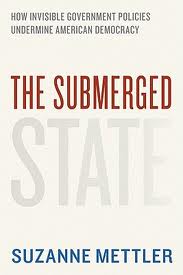This is a research project funded by the Leverhulme Trust that we are carrying out in Oxford. We aim to assess the effects of successive efforts to reform the executive government (the ‘state machine’) of the UK over the past thirty years. Some of those plans are illustrated below.
This project explores how those reforms played out, and how far they delivered on what had been claimed and expected of them. How much ‘leaner and meaner’ was the state machine after a generation of such changes? Such an exploration is not only an interesting study in its own right; it is also significant for assessing the prospects for the future of government in the coming decades, for example in assessing how government changed in the periods of cutbacks in the 1980s and early 1990s in the context of what is likely to be a period of prolonged fiscal restraint in the 2010s.
Project Summary
The past thirty years have seen many ambitious reform efforts worldwide to cut the costs of government and to improve its quality. These reforms often involved changes in management style (for instance, the so-called ‘New Public Management’ (NPM), in which concepts from the private sector such as competition, performance indicators, and bonus payments were applied to public administration) or the introduction of computer technology. There has, however, been little evaluation of the results of those reforms. Our study aimed to fill that gap, for the case of the UK over the past three decades.
Questions
Our questions are: how did changes in management structures and developments such as new communications and computer technologies reshape UK central government between 1980 and 2010? Did they have the desired effects on the costs of government operations and on the quality of public services? What happened to public perceptions of government and the public service over this period?
Project Findings
Cost of Government Administration: It is often said that NPM reforms associated with Margaret Thatcher’s government in the 1980s focused on cost-cutting of the central bureaucracy to the detriment of staff morale and public services. Since then there have been many further efficiency reviews intended to cut government’s costs. In this study we found that these initiatives have been largely ineffective in cutting UK government administration costs in absolute terms, as such costs have risen by over 30 per cent in real terms (that is, corrected for inflation) since 1980.
Administration costs of central government represented about three per cent of total public spending over most of the last three decades. Despite this relatively small proportion, these costs are often targeted as being ‘back-office’ bureaucracy as opposed to ‘front-line’ service provision. Announcing cuts in administration costs is popular with ministers who wish to be seen as being tough on government waste, or who would like government to emulate the efficiency of the private sector. The current coalition government has a target of cutting administration costs by 34 per cent between 2009-10 and 2014-15.
Comparing our data with that target, we found no reductions on anything like the scale currently planned. The only time that administration costs fell during the past 30 years was during the later years of the John Major premiership, when net costs fell by about six per cent in real terms between 1992 and 1997. This challenges the assumption that NPM was primarily a cost-cutting movement, especially in its early years under Margaret Thatcher (1979-1990).
 This Figure shows the administration costs of UK civil departments net of fees and charges for goods and services (e.g. issuing passports), corrected for inflation by dividing by the GDP deflator. The definition of administration changed several times since 1980, as staff and costs were redefined. We recalculated the figures as far as possible to reflect a common definition, but in the 2000s about 15-20% of civil servants were reclassified in one year, and further reclassifications have occurred since then. The dashed line indicates that we cannot compare administration charges after this reclassification. Calculated from data in Public Expenditure Statistical Analyses, HM Treasury, 1986-2010.
This Figure shows the administration costs of UK civil departments net of fees and charges for goods and services (e.g. issuing passports), corrected for inflation by dividing by the GDP deflator. The definition of administration changed several times since 1980, as staff and costs were redefined. We recalculated the figures as far as possible to reflect a common definition, but in the 2000s about 15-20% of civil servants were reclassified in one year, and further reclassifications have occurred since then. The dashed line indicates that we cannot compare administration charges after this reclassification. Calculated from data in Public Expenditure Statistical Analyses, HM Treasury, 1986-2010.
Quality of Government: How should we measure the quality of government? Indicators that reflect quality of government continuously over the past three decades – a period of huge societal and technological change – are difficult to find. The number of things done by government could be one measure (such as the number of tax returns or passport applications processed, or the number of prisoners in the criminal justice system) but how should we measure how well those functions are carried out, and how should we separate the effects of government reforms from those of technological and societal changes?
So we have looked mainly at how people view government as a way of assessing this quality. There is no single indicator that captures public opinion on this topic, so we have assembled indicators that reflect different levels of commitment to expressing (dis)satisfaction. At one end of the scale are opinion polls, which sample the whole population but may not reflect a well informed, well thought-out response to questions about government or public service quality, and may in fact reflect opinions on other matters such as economic outlook. At a higher level of commitment, we have responses such as making a formal complaint to an ombudsman, and at the highest level, taking legal proceedings against government with an application for judicial review (see figure below). Such responses reflect the levels of serious dissatisfaction, but may also be affected by the availability of such routes of complaint, some of which have increased over time. These indicators showed that successive reform efforts have not made people more satisfied with government or more likely to trust politicians, but neither has there been the collapse in satisfaction and trust that is sometimes assumed.
 Quality of Official Indicators: A significant aspect of NPM was the concept of ‘management by numbers,’ that is, the development of quantitative performance indicators, with the aim of making public policy and management more analytic and evidence-based. We found, however, in our study of official statistics that many data series were subject to breaks and reclassifications making, in some cases, assessment over the long term impossible. In other words, the reformers themselves, perhaps unintentionally, made it as difficult as possible for the impact of the changes they instigated to be demonstrated. In our study we spent much effort in ensuring the comparability of our data over time and developing methods for correcting for some reclassification changes.
Quality of Official Indicators: A significant aspect of NPM was the concept of ‘management by numbers,’ that is, the development of quantitative performance indicators, with the aim of making public policy and management more analytic and evidence-based. We found, however, in our study of official statistics that many data series were subject to breaks and reclassifications making, in some cases, assessment over the long term impossible. In other words, the reformers themselves, perhaps unintentionally, made it as difficult as possible for the impact of the changes they instigated to be demonstrated. In our study we spent much effort in ensuring the comparability of our data over time and developing methods for correcting for some reclassification changes.
Summary
Our results challenge the expectations both of supporters of NPM reforms and of those who were pessimistic about their prospects. Government administration costs were not cut by the amount that either supporters or detractors often assume. The quality of government – an elusive concept but measured here by various measures of public satisfaction – has not shown the dramatic decline that some expected, but neither has it improved significantly as expected by advocates of more responsive and transparent government processes. Our study suggests that reform efforts may have much less effect than either their proponents or detractors expect.
Sources of further information:
As an alternative to academic research papers (which are often not freely available online), new research on politics and policy topics is often presented in an accessible form on university blogs such as http://politicsinspires.org/, http://blogs.lse.ac.uk/politicsandpolicy/ and http://blog.policy.manchester.ac.uk/
Our articles on these blogs are here:
http://blogs.lse.ac.uk/politicsandpolicy/archives/27628
A summary of our study of government costs is here:
http://xgov.politics.ox.ac.uk/materials/pdfs/hood_dixon_2012_govt_running_ costs.pdf








No Comment